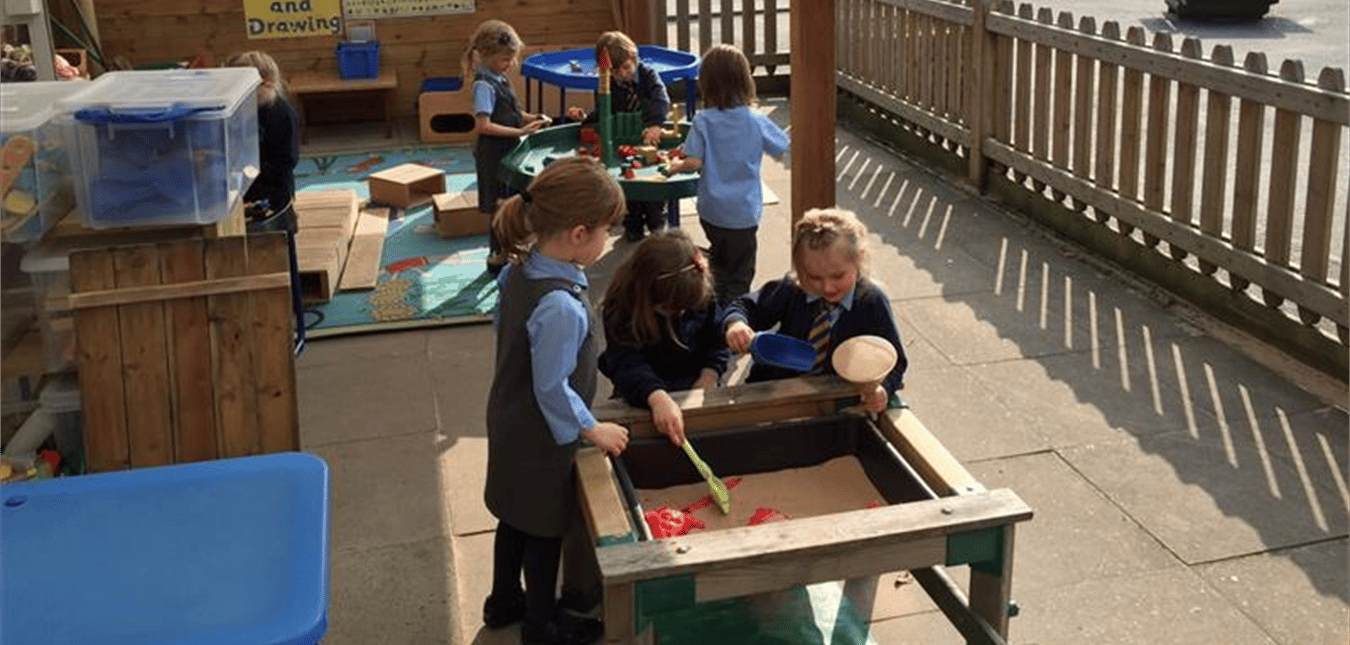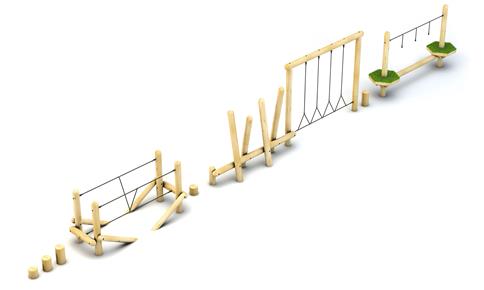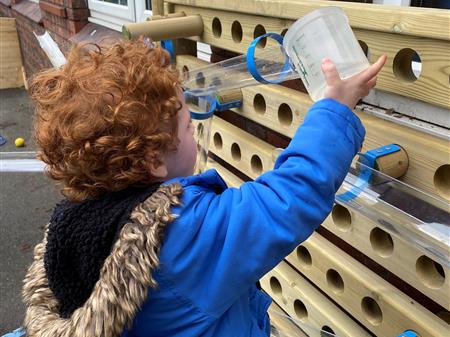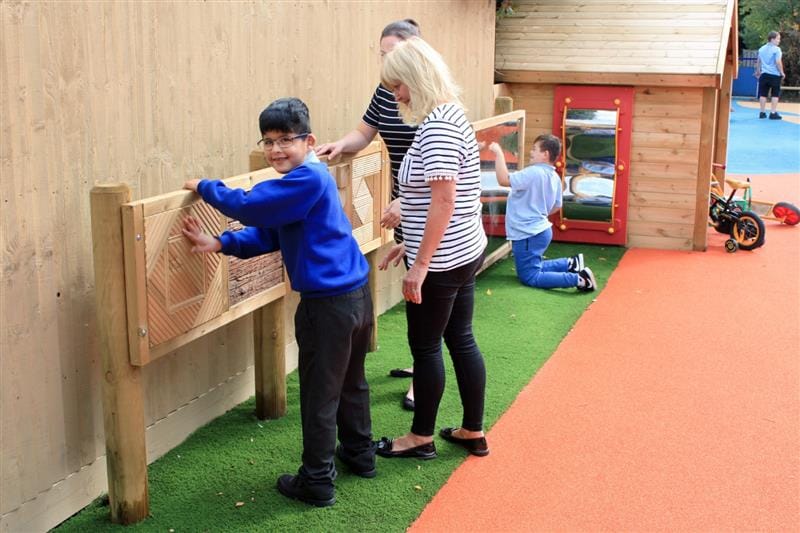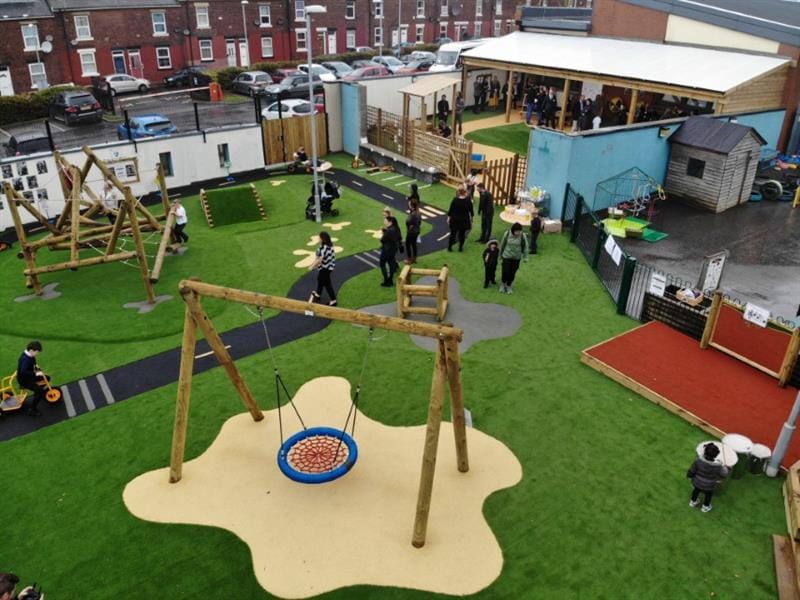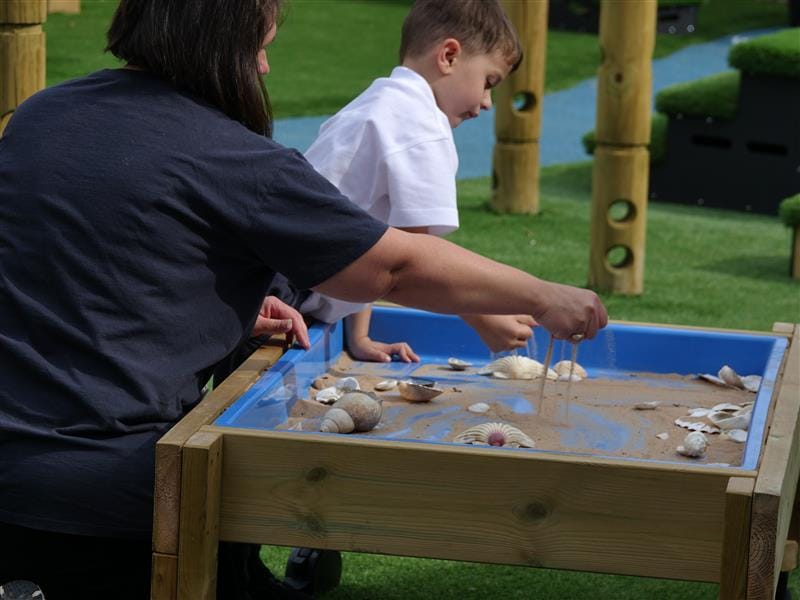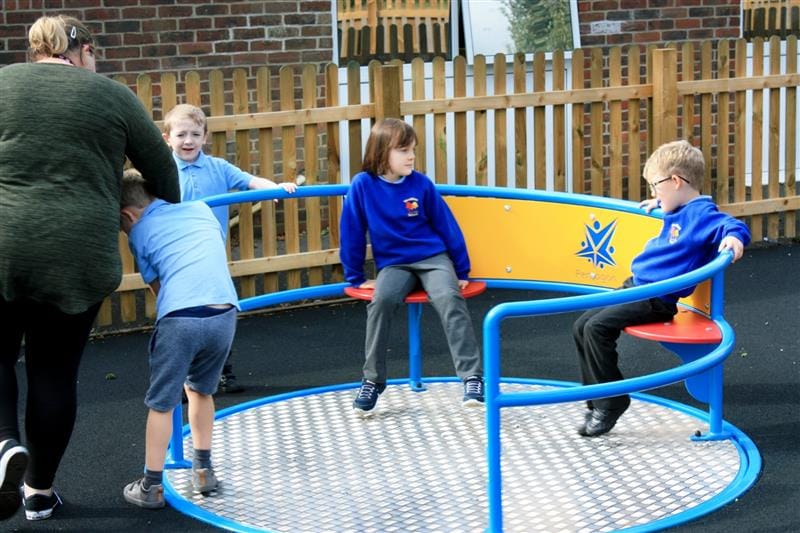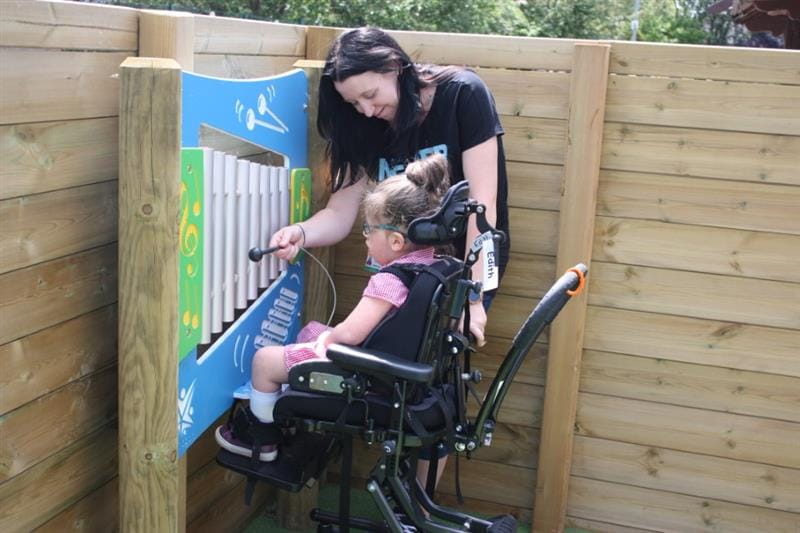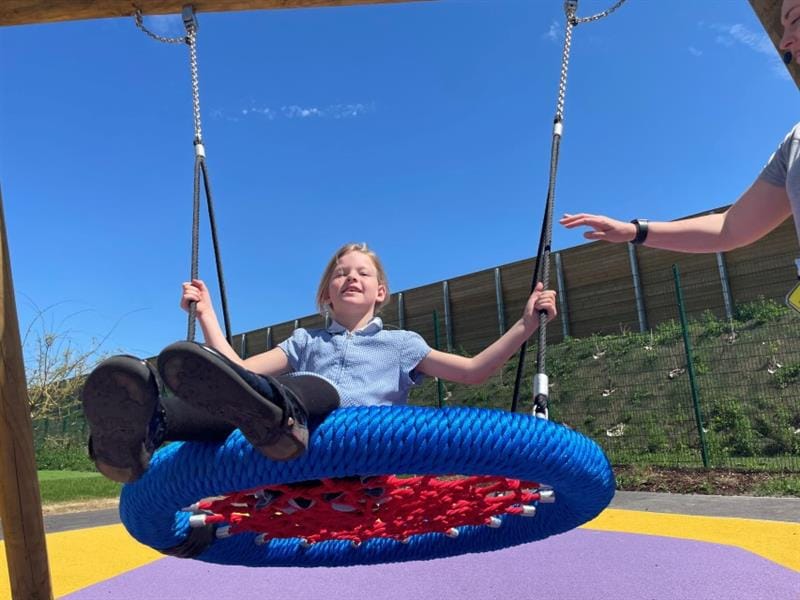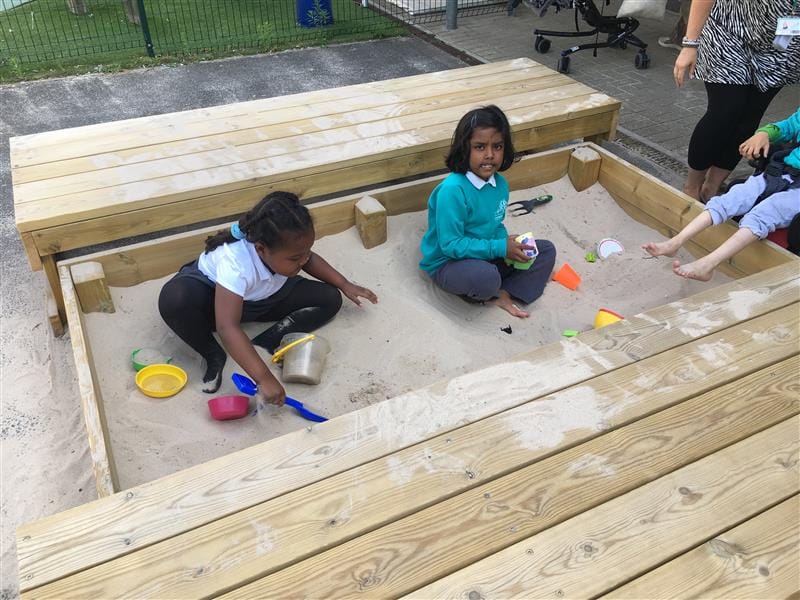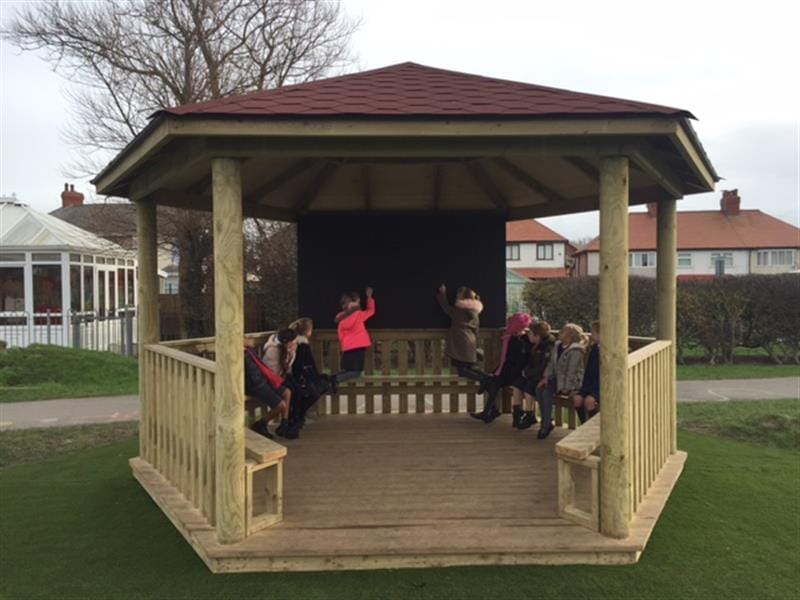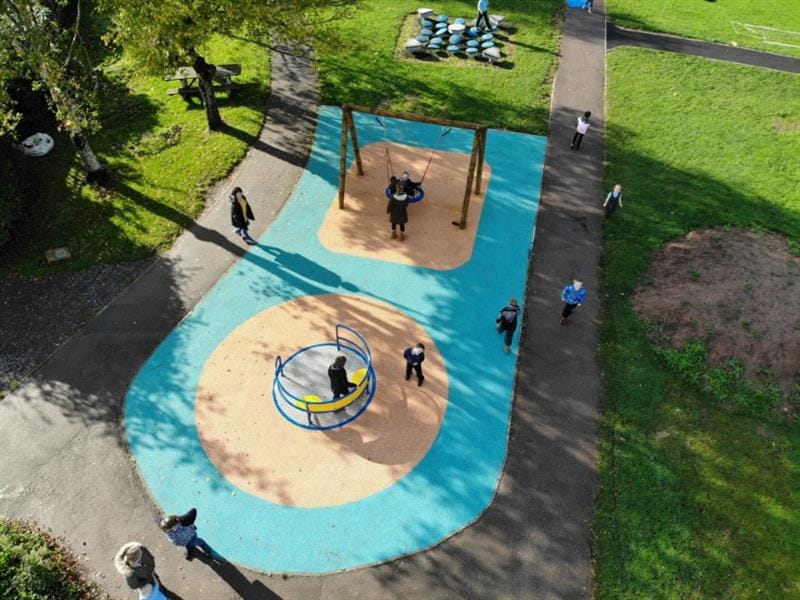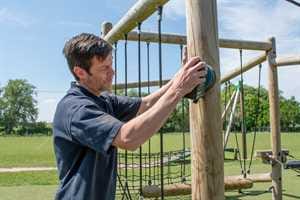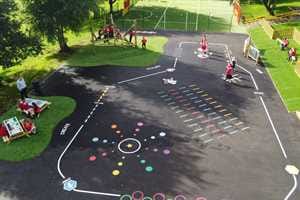
Playground Design
Design your playground to promote Inclusive Play to all children with SEN - Let’s Have Fun Together!
Play is central to the physical and social development of all children.
From a very early age, it is through play that we learn and develop many of the basic skills that we need to live in the world that we are born into; how to communicate with others, negotiate, take risks or overcome obstacles. It can be a way of exercising our bodies, keeping fit and healthy and enabling physical development.
For children, it is through play that they develop friendships and a sense of belonging. The opportunity to play is particularly important for children with disabilities and Special Educational Needs who will need extra support to enable them to get out there and play.
“Play is freely chosen, personally directed, intrinsically motivated behaviour that actively engages the child‟ (National Playing Fields Association, Children’s Play Council and Playlink 2000).
What is Inclusive Play?
Inclusive Play is something that all children and young people should have equal access to, and be able to participate equally in.
By creating an environment where diversity is respected and valued, we ensure that the principles of inclusion apply to children of all abilities, ethnic backgrounds and ages as they should do. And it is not just about inclusion for inclusion’s sake…
“Equally important is the provision of high quality play opportunities to children regardless of their needs and abilities. While children won’t always be able to participate in all available activities, an inclusive project should offer all children a real choice of play activities." (Ludvigsen, Creegan and Mills 2005).
Play is Recognised by Law as a Fundamental Human Right
Play is so important that it is recognised by law as a fundamental human right. The UN Convention on the Rights of the Child talks about the Right to Play, and states that “every child is entitled to rest and play and to have the chance to join in a wide range of activities including cultural and artistic activities”.
Inclusion is now promoted by law and government policy, in particular the Disability Discrimination Act 2005 and subsequent amendments which set out the basic legal duties in promoting equality for disabled people and children.
It includes obligations to make permanent, physical adjustments to allow access to indoor and outdoor leisure centres, adventure playgrounds, and play areas in parks and playgroups. These duties also cover education and associated services including playtime, leisure activities and after school clubs which run on school premises.
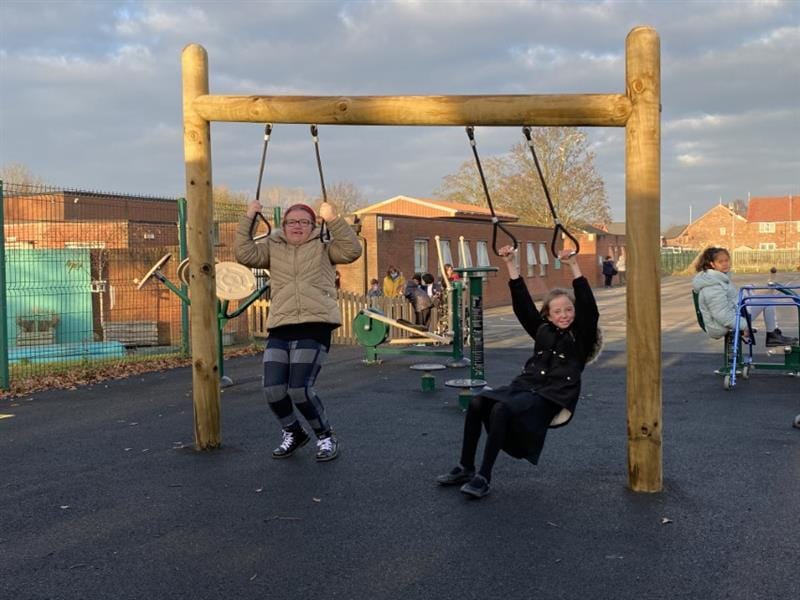
And as for Inclusive Play, well, research has shown that young people with Special Educational Needs and disabilities would rather play “the same games that everyone else did” than games designed specifically for them” (Kearney 2005).
We couldn’t agree more! We love play, especially outdoor play, and it should be available for everyone.
Creating Inclusive Outdoor Play Environments
We also recognise that it can be difficult for schools to know where to start when it comes to supporting these principles in today’s world.
Lack of accessible play environments, funding problems, discriminating social attitudes, the rise in traffic on the roads and understandably parents’ increasing fears for their children's safety, are all factors which contribute to limitations generally being placed on a child’s right to play and socialise freely.
But there is much that can be done if play spaces are carefully planned and thought out. If we think beyond simply installing play equipment, and be creative, we can create amazing Inclusive Play spaces!
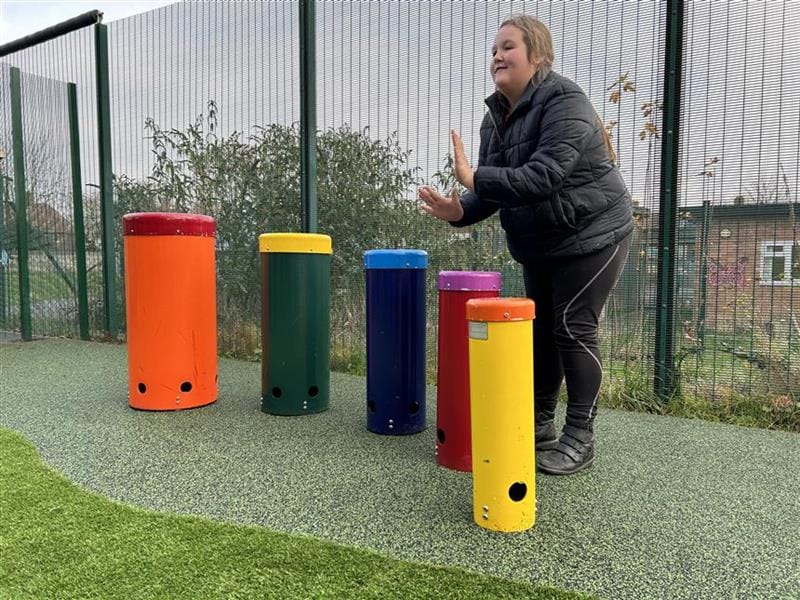
This sentiment is made clear in a report by Ofsted in 2005 which acknowledges that the attitude of the provider is key. “When the provider is positive, welcoming and displays a “can-do‟ approach, barriers to inclusion can be overcome”.
Inclusive Play is not just about recognising the needs of children with disabilities and Special Educational Needs, it’s about meeting the needs of all children through EYFS, Key Stage 1, Key Stage 2 and beyond, by understanding their need to play in a variety of different ways.
We have seen a number of examples of really good quality Inclusive Play spaces that have been developed around the country, with a range of different approaches to ensuring inclusion, have a look at some of our case studies for examples.
Designing spaces with a range of Inclusive Play Equipment can be a challenging and daunting task, whether creating a design from scratch or updating an existing area, there are so many different abilities and needs to consider.
Not everything suits everyone, but that is the point! At times there might be a need for individual designs that cater for a specific group of people, for example, those using a wheelchair or those with visual impairments.
Product Spotlight
It is worth remembering that an in-depth knowledge of the specific impairments that a child might face is not necessarily essential to the development of a great Inclusive Play provision.
The key requirement is willingness to look for and then overcome disabling obstacles and barriers. At the end of the day, the main aim is that all children using the space have an equally positive experience and do not feel that they have been excluded from opportunities during their play time.

Here's some great ideas to ensure your playground is inclusive
Inclusion needs to be considered at every stage of the process, from planning a design for your Inclusive Play space, through to installation, evaluation and maintenance.
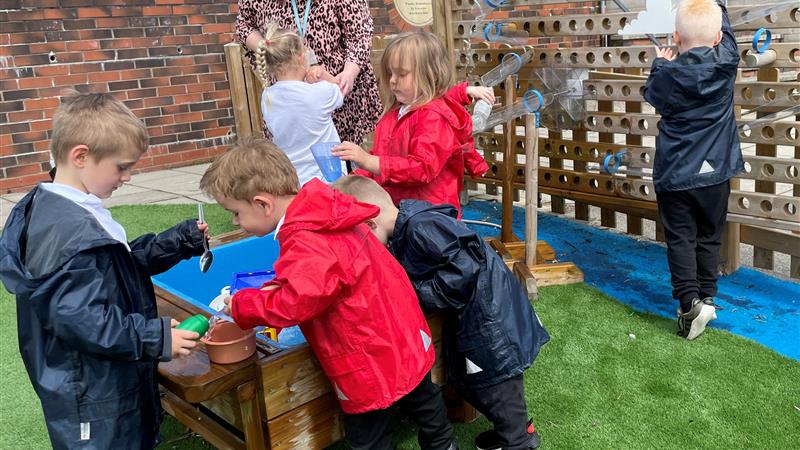
If you do this, you can’t go far wrong. And it’s always good to consult with your children and ask them for ideas of things they enjoy doing - they will love being involved and often have the best imaginative ideas to give you inspiration!
Remember, that although some children find it easier to engage in certain play activities than others, disabled children and those with Special Educational Needs will, on the whole, enjoy the same kind of activities as other children.
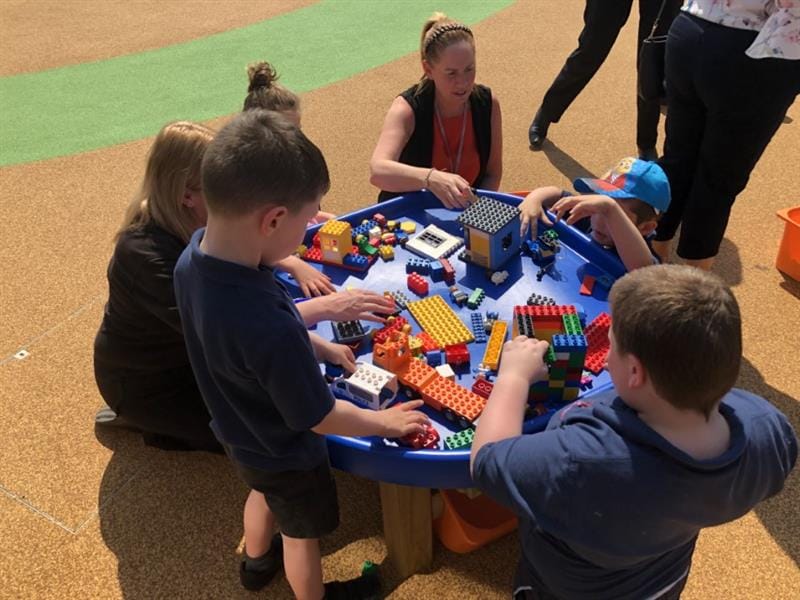
There are different types of barriers which can prevent a play space from being accessible to and inclusive for children with different needs. Consider for example a child with a wheelchair trying to negotiate a traditional play area, or how a busy and noisy space might feel for a child with a visual impairment or a child with Autism.
Not all children will be able to take part in all the activities you provide, so your play space must be designed creatively to offer access, challenges and sensory or physical experiences, to ensure it offers a great experience for everyone.
How to create good access to your Inclusive Play Space
For a play space to be truly Inclusive, consider both access to the play space itself, and access in terms of children moving around, reaching out to and experiencing the different activities on offer.
1. Is the surface accessible?
Can a child using a manual wheelchair, a powered mobility vehicle or a walking aid easily get to the play space? Potential barriers on the approach such as kerbs, narrow paths, steep slopes, and uneven surfaces should be replaced with more accessible pathways.
Pathways should be wide and level with smoother surfaces. Any necessary ramps should have only a gentle incline even if it means they have to be longer with gentle bends.
Path surfaces need to be suitable for wheels so gravel, woodchip and loose sand should be ruled out. Tarmac, Wetpour and Safeturf provide a smooth safe surface which is preferable.
A clear route through the play space should be set out following the same rules. It’s even better if you have a number of routes to avoid congestion and create interest in moving around the space.
Some children might use a wheelchair for some of the time but will be able to engage in physical activities in the play space outside of their wheelchair, and some will bring walking aids to get to the playground but will not use them while they are playing.
Make sure there is a big enough safe area for them to park or store their equipment while they are playing so that they do not feel that it is getting in the way or they have to keep it with them when they don’t want or need it.
2. Can all children participate in the activities on offer?
Once they have arrived, can a child using a wheelchair, mobility vehicle or walking aid properly access and take part in some or all of the play activities on offer?
They should be able to play alongside other children and there should be enough space around the play equipment so that a wheelchair user will not become trapped or blocked or feel “in the way”.
Ensure that all children have the opportunity to get close to the activities and stimulus on offer and set out a route that allows children in a wheelchair to be right in the centre of the action if they want to be, even if they cannot play on some of the more challenging equipment.
There should be other exciting things in close proximity for them to do.
3. Are resources easy to reach?
Place some interesting and engaging resources within easy reach of entrance points and close to the edge of pathways.
This will ensure that children in wheelchairs can easily see them and reach out and touch them.
Ensure that at least one of your special featured items is highly accessible.
For example, a colourful Activity Play Panel with pulleys, gears, a driving wheel or a mirror, or a Musical Instrument Panel such as a Bongo Panel or a Glockenspiel Panel, strategically placed at the edge of a wide pathway means that a child in a wheelchair can sit right next to it and play.
Trees and/or plants placed in raised Planters at the edge of a wide pathway can be touched by children in a wheelchair who will be able to enjoy the different sensory experiences they can offer.
MUST READ: Sensory Play Ideas for Children with Special Educational Needs
Activities that promote Inclusive Play
The best inclusive playgrounds offer a range of different activities and experiences, so that everyone has an opportunity to have a go at something and find something that they can enjoy.
There are many different types of play, whether active, physical, noisy, quiet, creative, messy, sensory or musical, played in teams or in groups or individually. The aim is to offer a balance of opportunities for all or most of these!
Play opportunities should be challenging for different abilities and in some settings, need to be interesting for children of different ages whether EYFS, Key Stage 1 or Key Stage 2 level.
1. Maximise the space that you have
You can incorporate a variety of accessible high points and raised platforms to maximise the space that you have and add an element of adventure. Landscaped mounds, bridges, and climbing equipment such as Trim Trails, Play Frames and Tower Units with different degrees of difficulty all offer this and they make brilliant active play stations.
Children can have fun at the same time as improving their upper and lower body strength and motor skills! For a play space to be really inclusive, it needs to be inspiring for all children and to provide a challenge to those children who want it!
2. Offer a sense of freedom and exhilaration
Slides and swings offer children a sense of freedom and exhilaration. A Cradle/Group Swing is superb traditional supportive swing, which can be enjoyed by children who may not be able to hold themselves up on a standard swing.
Incorporate loads of sensory play in your Inclusive Play space. This is the most accessible type of play for everyone and there is loads that you can to be creative. Think about offering stimulating visual, audible and tactile opportunities.
Have a look at our website for more information and ideas around Sensory Play. You can include some quiet areas that offer gentle sensory experiences which benefit young children at EYFS or children who need time out away from high octane action!
Read our exclusive post that reveals some great Sensory Play ideas for children with special educational needs
3. Everybody can enjoy messy play activities!
Water and Sand offer fantastic play experiences which everybody can enjoy. A hardstanding access point to a Sand Table or Water Table enables inclusion and encourages exploration through all the senses.
A child with visual impairments can be engaged through touch, reflected light, or strong colours and contrast. Fill them with different materials and objects offering a mix of interesting textures, shapes, weights, flexibility and temperatures.
If you have a good sized playground, you can offer children a choice of busier and quieter play areas within a play space to make it more inclusive. Not all play activities need to be physically demanding and many children love taking part in creative and exploratory activities.
Mark Making Panels can offer time for quiet creativity with chalks or coloured paints. Musical Panels offer interest through both sound and vibration. Installing a Planter or Dig Pit for a spot of digging and gardening can be very therapeutic.
Take a look at our Imaginative and Creative range for sensory and tactile play resources
How to consider a child's comfort
A good Inclusive Play area will offer facilities and space to rest for those who need it. Some children will tire quicker than others, and if they usually use a walking aid, they may need more opportunities to have a break. Some children with behavioural difficulties will need more opportunities for “time out” to sit quietly for a moment and adjust to what is going around them.
There needs to be enough good seating in appropriate accessible places and set at different levels to accommodate the number of children who might want to use it at any given time. The seating should include integrated spaces for wheelchair users who should be able to comfortably join in the rest time and chat to their friends.
Feel free to view our wide range of Playground Seating that you can use in your Inclusive Play space.

When choosing a location for your Inclusive Play Space, always make sure that there is quick and easy access to toilets and changing facilities where appropriate, so that nobody has to suffer any discomfort or embarrassment.
If you can, choose a location that offers plenty of natural shade or shelter to protect children from inclement weather or exposure to strong sunlight. A large Gazebo or Timber Canopy are great multi-purpose additions to an Inclusive Play space as they can offer shelter and a resting space for all children.
How to make good use of signs in your Inclusive Playground
You may wish or need to have signs in your Inclusive Play space for any given reason, whether to notify users of specific information that they need to know about using the space, or to enhance the Inclusive Play space by offering interesting facts or descriptions or setting challenges for children as they play.
If the space is to be inclusive then all signs must be clear and visible. Use Braille so that children with visual impairments can read them too. They could be colour coded where appropriate and contain symbols and picture images as well as words, so that they are easier for children who do not have English as their first language or cannot yet read to interpret.
Good use of signage and orientation maps can help some children with Special Educational Needs, who may be uncomfortable with change or surprise, to help prepare them for what they are about to experience and feel more comfortable in their surroundings.
How to ensure your inclusive playground is safe for your children with special needs
At one level, it is important to remember that risk is an essential part of play. All children need to experience an element of risk and challenge in their lives to enable them to develop and learn new skills.
But this should only be in terms of how they choose to play. When designing and installing an Inclusive Play space, the utmost care must be taken to ensure that it is safe.
- Specialist equipment and surfaces should only be installed by appropriately qualified and skilled craftsmen.
- A play space should be regularly checked for any damage and well maintained.
- Security should be considered as a whole, in terms of who has access to the play space, and supervision of children playing within it.
- Schools will have their own policies and guidelines to follow in terms of child safety and supervision when playing outside, and it helps if this is taken into consideration at design level. This is essential if the play space is going to succeed in being inclusive and available for all children to use at any one time.
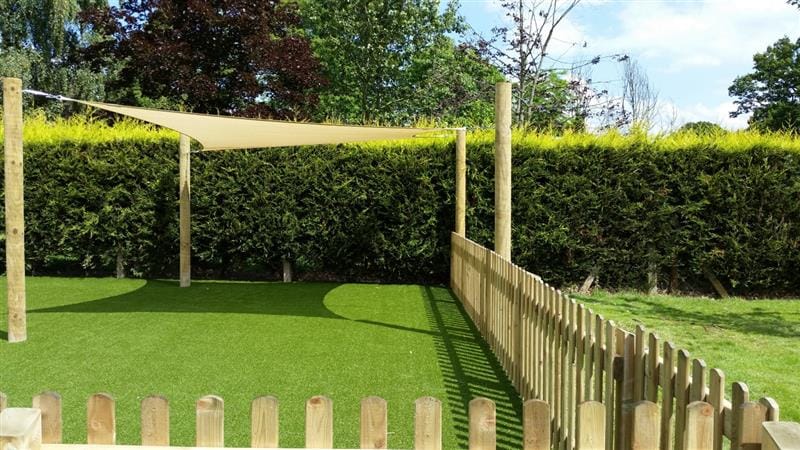
In some spaces, it may be necessary to install Security Fencing as a boundary, or some playful and colourful Playground Fencing to mark out a play space that is already within a secure environment.
There may be scope for including natural boundaries that can reduce the tendency for young children or some children with behavioural issues to wander off.
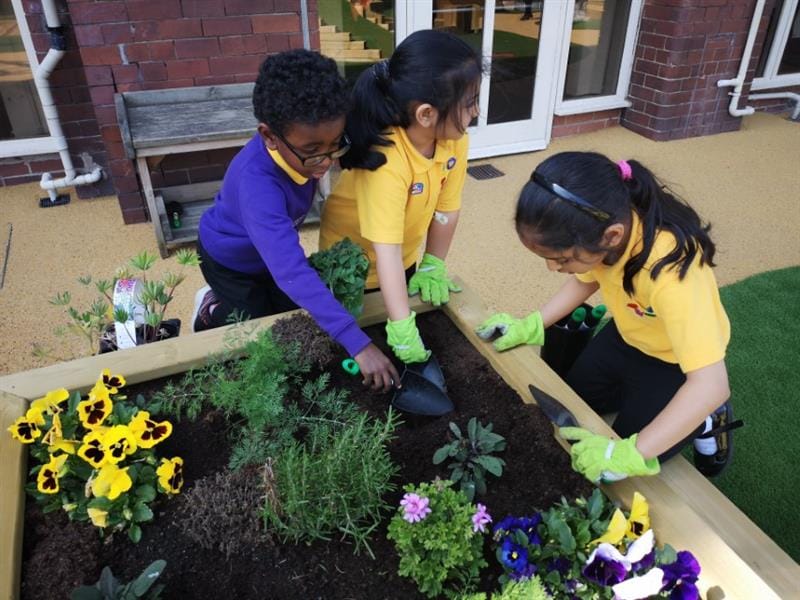
Strategically placed hedges and natural Planters full of brightly coloured and seasonal plants can be used do this, whilst adding to the natural appeal of your playground. A Trellis Screen is an attractive boundary especially if flowering plants are trained to climb up it.
We hope that we have provided you with some useful information to get you started. Please do Contact Us if you would like to talk to us about developing your own Inclusive Playground. Most of all, we hope you enjoy getting together and having some fun!
While you're here, take a look at some of our playground developments for Special Needs Schools
